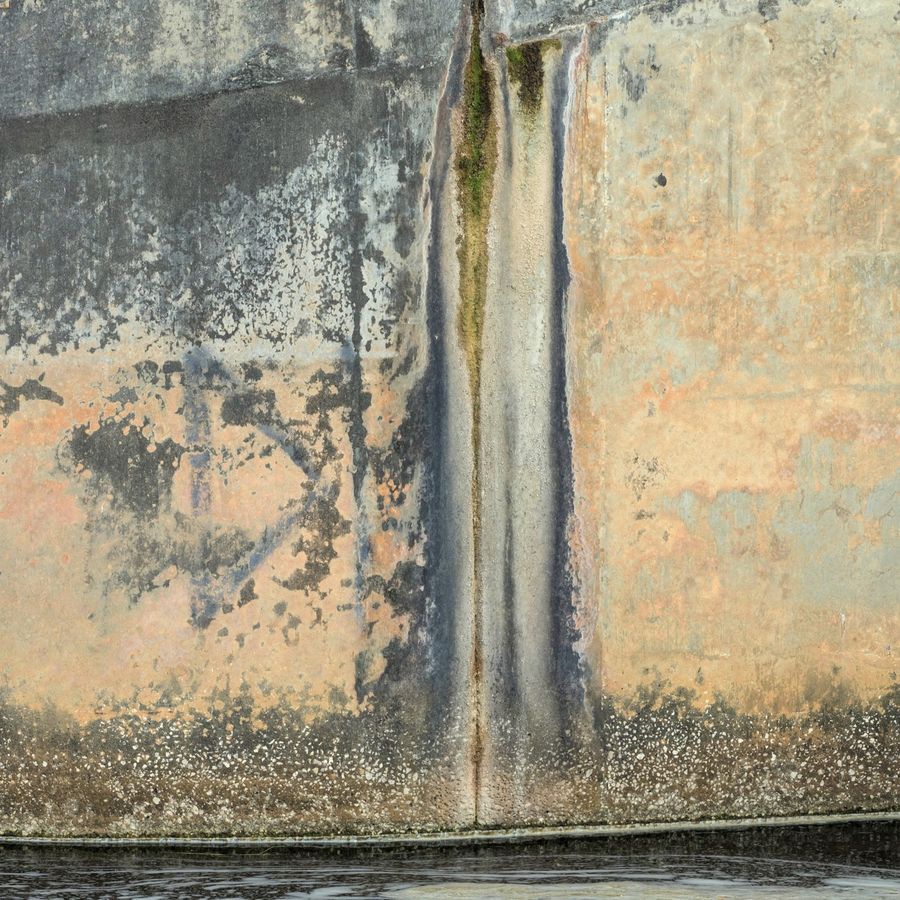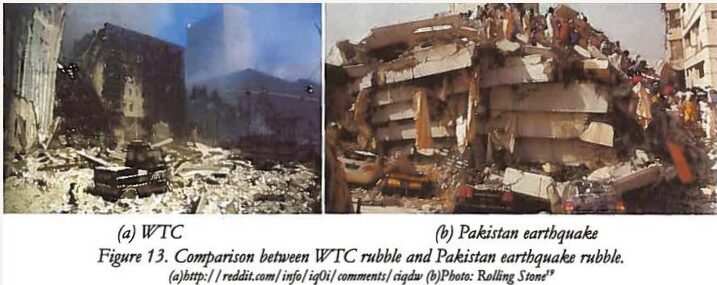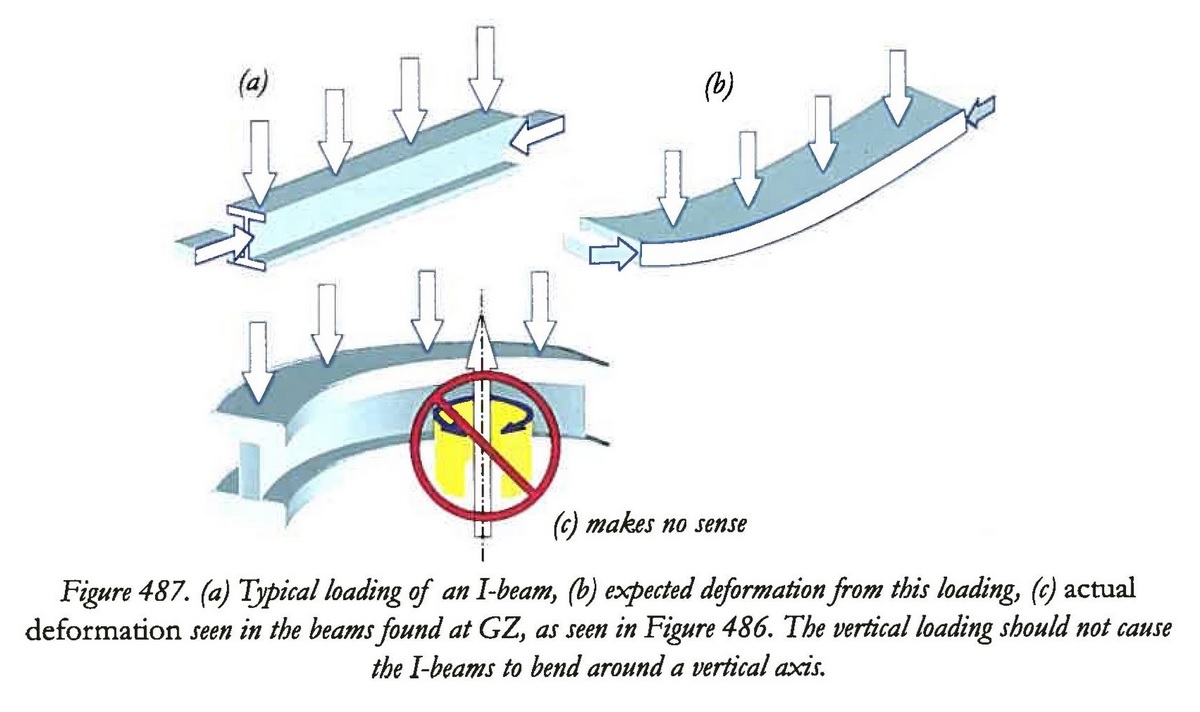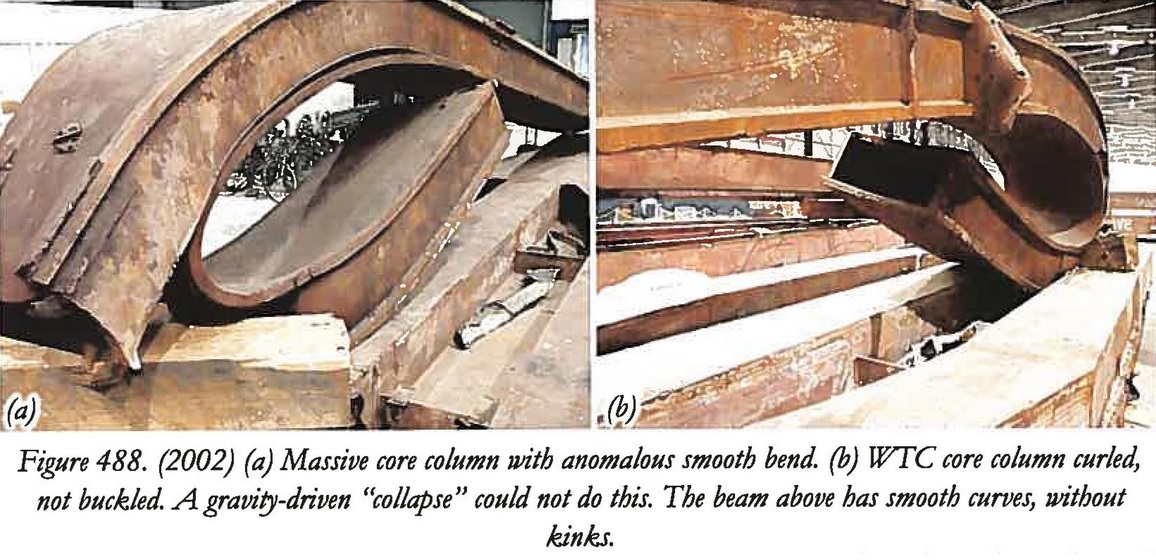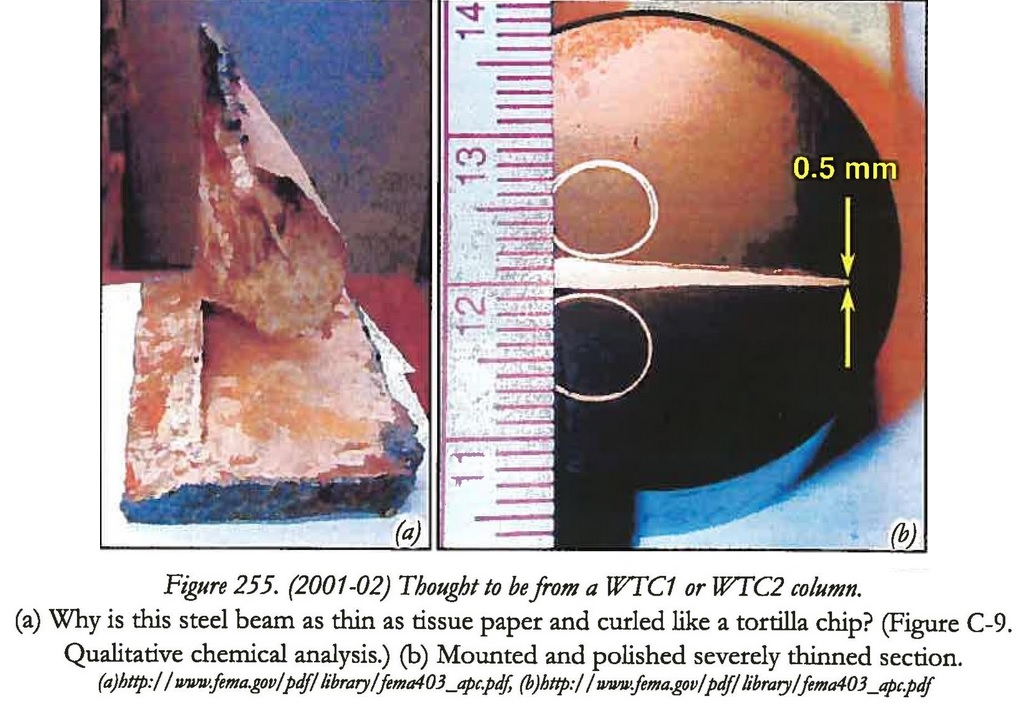In these next review articles in this series on 9/11, we will directly be referencing the work of Dr. Judy Wood and the evidence she has found for the use of Directed Energy Weapons (DEW) in the destruction of the buildings in the World Trade Center complex. She has written extensively on this matter in her book Where Did The Towers Go?, first published in 2005. Her book has been archived and is free to be viewed here.
Judy Wood’s background is described as, she ‘holds a B.S. in Civil Engineering, an M.S. in Engineering Mechanics (Applied Physics), and a Ph.D. in Materials Engineering Science – degrees that speak to nothing less than an adult lifetime dedicated to scientific analysis and observation’, as is noted in the foreword to her book. [1]
If you are someone who prefers to learn through watching or listening, then I highly recommend the following video, as it gives a good fly-over summary of evidence for DEW on 9/11.
Starts at 2:10 mins
The Official Theory
When Judy Wood first saw the footage of one of the towers “collapsing” she knew that something wasn’t right, that ‘buildings don’t just “unravel” like sweaters…as though it had turned into a volcano of dust’. [2] In order to test her sanity, she applied her physics-mind to a basic mathematical equation, to see how long it might take for an object at the same height of the tower to fall to the ground. She came to the number of 9.22 seconds, which corresponded to the length of time the tower “collapse” footage showed. [3] In a quick cross-evaluation, she realised that this would be impossible for a building with over 100 floors of concrete and steel to collapse at near “free-fall speed”. Each floor that it met, would form a wall of resistance, which would slow and impede any force of downward motion, so that ‘consequently, if there is such resistance, the building cannot “fall” at anything even remotely approaching free-fall speed.’ [4] The official length of time given by The 9/11 Commission Report states a fall-time of 10 seconds for WTC2 and the National Institute of Standards and Technology (NIST) reporting a time of 11 seconds for WTC1 and 9 seconds for WTC2. [5]
The Pancake Collapse Theory
According to the official narrative, ‘the WTC towers fell by “pancaking,” propelled from gravity alone, in 10 seconds’. One major discredit to this “official theory” is taken from the evidence with regards to the topmost floors above the area of the “damage-zone”, which Wood takes as floor 80 (for WTC2), such that ‘Even if the initial “collapse” were to begin at the 80th floor, where the building was damaged, the 30 floors above the 80th floor would still need to “pancake” in order to get the entire structure to the ground. There is no evidence of 30 floors remaining intact, so we must assume, if we are to accept the Official Story, that there was “pancaking” also in the topmost floors, although we do not know what mechanism may have caused such a phenomenon.’ At the end of the destruction of the buildings, for both towers 1 and 2, there was ‘no block of floors remaining intact…Thus, we cannot assume the floors stacked up like pancakes’. [6]
Kinetic Energy Spent Where?
The “pancake theory” is also analysed as it pertains to the expenditure of kinetic energy as the building is destroyed. Wood examines the evidence of what is seen during and post destruction, and notes there is no “pile up” of floors stacked at the base of either of the towers, but rather what appears as “pulverization” of both towers as they are destroyed in mid-air. In her analysis, she states, ‘kinetic energy cannot be spent in diametrically opposite tasks; that is, it cannot be spent in “pulverization” and in “pancaking.”. . .So, if there were enough kinetic energy for pulverization, there would be pancaking or pulverization, but not both. Energy can be spent only once. If the potential energy is spent to pulverize a floor upward and outward, it cannot be spent again to accelerate the building downward. In order to have pancaking, a sufficient downward force is required to trigger the failure of the next floor. But if the building above that floor has been pulverized, then there can be no downward force. As observed in the pictures below, much of the material has been ejected upward and outward. Any pulverized material remaining over the footprint of the building will be suspended in the air and therefore cannot contribute to a downward force slamming onto the next floor.’ [7]
Lack of Substantial Debris Pile
If we were to compare a true “pancake” rubble pile of a building in Pakistan versus the rubble pile after the WTC “collapse”, the differences are stark. Here we have two photos in side-by-side comparison as found in Wood’s book:
Wood further examines photographic evidence of the debris pile leftover after the towers were destroyed and notes that ‘little to no significant debris remained’ which is not consistent with a “gravity-driven collapse”. This can be observed in the photos below taken from Wood’s book:


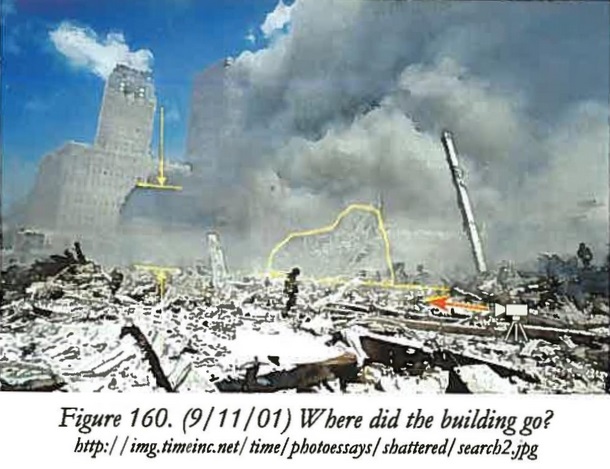
More on this can be read on pages 170-181.
WTC1 and WTC2 stood at 417 and 415 metres tall, respectively, each weighing over 500,000 U.S tons of material, leaving behind comparatively little debris, considering the substantial mass and volume it formerly occupied. This is indicative of some other force at work here, to cause such colossal objects to somewhat disappear into huge volumes of dust and leave behind little trace of their former existence.
NIST Report Comments
Something worth noting in a National Institute of Standards and Technology (NIST) report on the structural design of the WTC buildings, explains that considerations were taken in the design engineering process of both buildings as to the effect of the impact of a commercial airliner upon the building. The report references documents ‘obtained from PANYNJ indicated that the impact of a Boeing 707 or DC 8 aircraft flying at a speed of 268 m/s (600 mph) was analyzed during the design stage of the WTC towers. . .One document stated that “…Analysis indicates that such collision would result in only local damage which could not cause collapse or substantial damage to the building and would not endanger the lives and safety of occupants not in the immediate area of impact.”’ [8]
Structural Beam Abnormalities
Seen in the aftermath of the destruction of the WTC buildings were various anomalies regarding the accelerated decay and severe and strange morphological changes of the steel structural beams. Wood explains that ‘Structural steel is made of iron mixed with other materials, such as carbon and manganese, that improve its structural properties as well as its resistance to rust and corrosion.’ [9] However, examining photographic evidence of the WTC destruction, significant changes to the structural beams seems to have occurred, with beams appearing to have nearly completely and severely rusted, along with strange hole formations and “tissue-paper-like” curling of extremely thin sections of steel. Wood asks the following questions, ‘First, what consequence of controlled demolition or burning airplane fuel could account for these corrosive results? Moreover, what force or heat in either process could not only reduce these beams to “tissue-paper-thinness” but then furthermore curl them or make them like “Swiss cheese”? What type of energy fields could develop the extreme types of vorticular bending and damage found in these photos?’ [10]
The following photos showcase extremely unusual deformation of structural I-beams, bent around the wrong axis and not where overloading would be expected to occur, if the “collapse” was a true “pancaking” of floors.
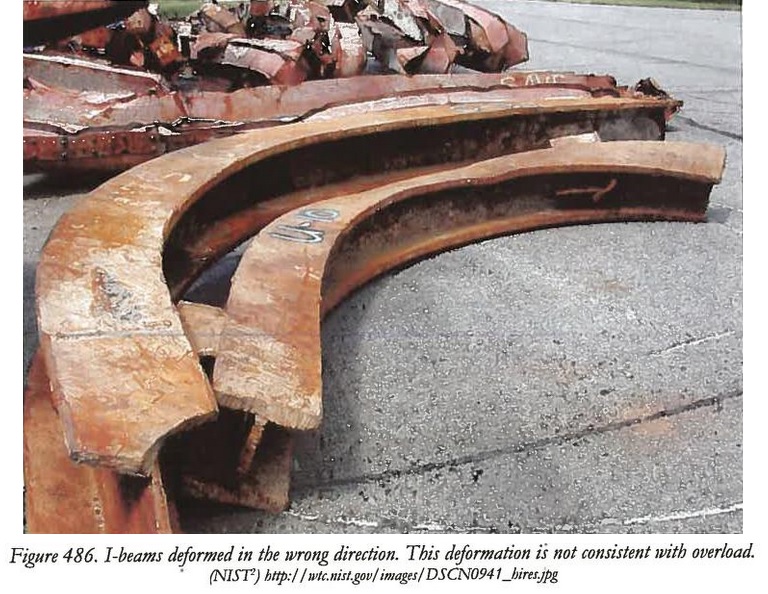
Wood makes the following comments relating to this photographic evidence, in that they ‘tell a story of extraordinary deterioration that can best be described as molecular dissociation’, [11] whereby ‘the molecules have let go of these additional ingredients on the surface, effectively turning the material back into iron’, which rusts ‘quickly and very uniformly’. [12]
Lack of Bathtub Damage
At the base of the WTC was a structure known as the “bathtub”, effectively acting as a basin to protect water influx from the nearby Hudson River into the foundations of the WTC buildings. This protective wall sat 7 stories below ground level, which, contrary to what would be expected if two 110-story skyscrapers “collapsed” onto it, survived with ‘no evidence that the 70-foot-deep retaining wall around the basements has been damaged or breached’. The bathtub itself was not designed to ‘withstand such colossal impact. . .No bathtub structure could remain unscathed after a mountain of material from a quarter-mile-high building was dropped on it not just once, but twice.’ Again, as Wood points out, ‘the intact structure appears to contradict the official theory of a gravity-driven collapse…’ [13]
Further details can be read here.
Why This Is Not Controlled Demolition
When we examine the conditions needed to successfully complete a controlled demolition of a building, particularly one that sits in a densely clustered area of high rise buildings, as well as being an actively functioning office premises, it may be helpful to look at previous examples of buildings destroyed by controlled demolition. Wood explains, ‘conventional Controlled Demolition requires considerable preparation in time and equipment’ . . .The [Seattle] Kingdome used 4,461 pounds of carefully placed explosives and over 21 miles of detonating cord.‘ As was reported in one article, which Wood references, ‘If not enough explosives are used, for example, the Dome may not collapse with ease; if too much explosives are used, parts of the Dome could hurl beyond expectation.’ [14]
Under normal conventional controlled demolition conditions, some of the preparation work to buildings includes ‘anything that can be removed must be removed, including non load-bearing walls. Glass windows must also be removed so that they do not become deadly projectiles, and so much anything else that could become a projectile. When things blow up, chunks go flying, and they stay as chunks until they hit something…So in planned controlled-demolition projects, the problem of projectiles is reduced to a minimum before the actual demolition.’ [15] Such preparation was not at all possible with the WTC buildings, and ‘As a result, there would have been a great number of projectiles ejected from the buildings. But this is not what we saw. Instead, there is virtually no evidence of projectiles having damaged the surrounding buildings – and none at all above the 18th or 20th floors. In addition, there are virtually no chunks of debris, but only powder…’
Controlled demolition explosives are detonated remotely, which requires protection of the site from ‘random signal interference that could have disastrous consequences’, with requirements for 2-way radios and cell phones to be turned off in prepared demolition sites. ‘Think of the implications of massive cell phone use by New Yorkers in Lower Manhattan prior to 9/11 – surely including the vast majority of people who worked in the towers.’ [16]
Assuming that the extensive preparation, explosives and equipment needed to set-up the controlled demolition of the WTC complex buildings, which were nearly all destroyed on 9/11, was successfully completed, then ‘500,000 tons of building material would have slammed down onto the foundation and would almost certainly have destroyed or at least significantly damaged the protective bathtub and flooded lower Manhattan as well as the subway tunnels and the basements of all buildings connected to these tunnels.’ [17] Additionally, bomb-sniffing dogs were reported on active duty before and on 9/11, with ‘no record showing that these dogs had detected such explosives.’ [18]
Dust that is produced by controlled demolition bears marked differences to the dust created in the destruction of the WTC towers. The following images show examples of the characteristics of dust clouds produced in conventional controlled demolition:


The dust from the Kingdome ‘choked downtown for nearly 20 minutes’, which as Wood clarifies, is coarse dust that settles ‘out of the air’. The following WTC satellite image shows ‘the dust-cloud/fumes shown in the satellite picture from the WTC event rose into the upper atmosphere for many days.’ [19]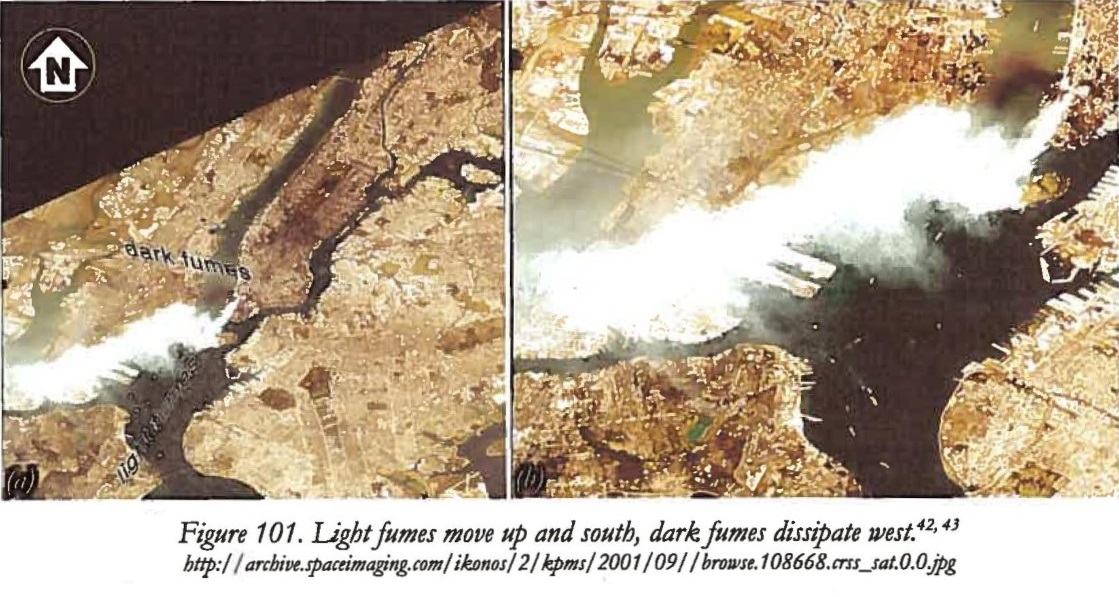
Wood writes extensively on the empirical evidence that rules out conventional controlled demolition, which can be found here.
